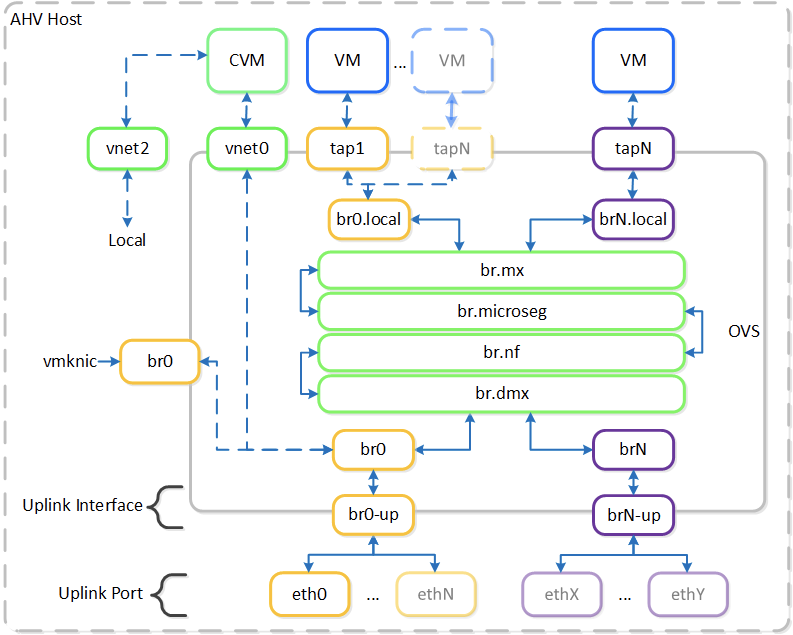As the title said, does anyone know about this interface is used for?
What is vnet2 interface in AHV host used for?
Best answer by Nutonian
Here is how I look at it.
- Dont not get hung up on what vnet is used for?
- As of today , CVM has 3 ports, eth0, eth1 and eth2.
- eth0 is the port connected to the external IP address
- eth1 is connected to the internal linux bridge.
- eth2 is present incase customer configures backplane.
Use of certain scripts can change what vnet0, vnet1 and vnet2 represents.
The way to check this is to match the Mac address of eth0, eth1 and eth2 from CVM (ifconfig) to the ifconfig output shown when run from the host and compare the vnet interfaces.
Match the mac address to know which interface is actually external and which one is internal.
The only thing set in stone is eth0 is always external and eth1 is always connected to internal linux bridge. The naming of the port where it connects to the OVS is interchangeable and is executed and the time of the boot from the CVM config xml.
Output from CVM :
eth0: flags=4163<UP,BROADCAST,RUNNING,MULTICAST> mtu 1500
inet 10.2.126.26 netmask 255.255.252.0 broadcast 10.2.127.255
inet6 fe80::526b:8dff:feb0:fdc1 prefixlen 64 scopeid 0x20<link>
ether xx:xx:8d:b0:fd:c1 txqueuelen 1000 (Ethernet)
Output from Host :
vnet0: flags=4163<UP,BROADCAST,RUNNING,MULTICAST> mtu 1500
inet6 fe80::fc6b:8dff:feb0:fdc1 prefixlen 64 scopeid 0x20<link>
ether xx:xx:8d:b0:fd:c1 txqueuelen 1000 (Ethernet)
In this case , eth0 is connected to vnet0.
Enter your E-mail address. We'll send you an e-mail with instructions to reset your password.







